
How WA's container deposit scheme will work
Western Australia’s new container deposit scheme, Containers for Change, launches in June 2020. Here’s what you need to know for now.
Posted on: December 17, 2025
Ready to make this festive season feel lighter and brighter? It’s easier than you think!
With a few clever swaps, thoughtful present choices and some space in the freezer, you can keep the celebrations joyful whilst doing better than the bin.
Forget the ‘12 Days of Christmas’, this year we’re inviting you to join the GREAT Sorts who are making these simple changes as part of the ‘12 Ways of Christmas’!

This year, why not make your wish list about experiences and moments rather than more things? Ask for an activity voucher (bonus points for an e-voucher!) or plan a lunch catch up with someone special.

Traditional gift-giving can be just as fun with a fresh approach. Instead of buying something for each person, try a Secret Santa where each person buys only one gift to be selected from a Santa’s sack, or consider gifting items that sourced with care, upcycled or made with love.
Some of our favourite low waste gifts include: cooking class vouchers, a meal out at a favourite restaurant, concert or movie tickets, memberships such as those for a toy library, the zoo, a yoga studio or golf club, homemade baked goods, plants and tools that will help to reduce the recipient’s waste.
The best gifts aren’t about more “stuff”. They’re about creating memories and giving something truly useful.
Experiences are a fantastic way to keep waste low and joy high. Think memberships, tickets or hobby passes. Whilst thrill seekers might be grateful for that sky-diving voucher, DIY vouchers for babysitting, pet-sitting, cleaning services, gardening help, or a home-cooked meal are often the most appreciated by time-poor friends and family.

When you do shop, choose gifts that last or get enjoyed completely. GREAT Sorts consider:
Finally, don’t be afraid to scour second-hand and vintage shops – a well-chosen pre-loved gift is likely to spark far more joy than a last-minute buy.
Beautifully wrapped gifts don’t have to cost the Earth. This year, skip foil wrap, glittery paper and cards with plastic attachments, as these aren’t suitable for kerbside recycling.
Instead, reuse what you have. Last year’s wrapping paper and gift bags means there is often no need to buy new supplies, so saving materials from gifts you receive this year for next will keep that stash stocked.
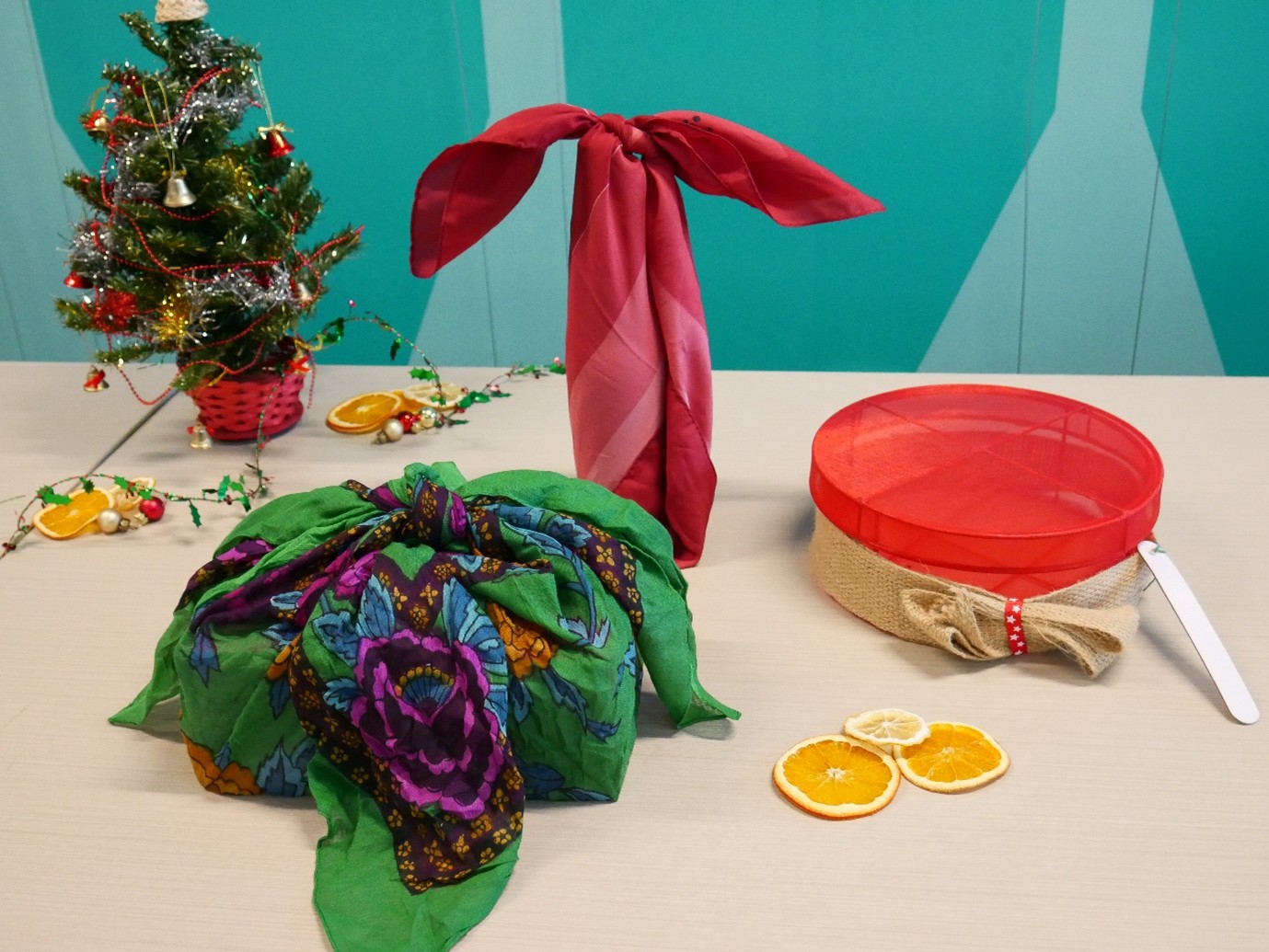
If you do need something new, look for wrapping paper which is 100 per cent paper and marked as recyclable or opt for brown paper or newspaper for a chic effect. Tie with string or ribbon instead of tape for a stylish, low-waste finish.
Want to get creative? Try furoshiki, the Japanese art of wrapping gifts in fabric. It’s elegant, reusable and adds a personal touch. Second-hand scarfs or tea towels work perfectly for this and become part of the gift!
Skip the stress (and waste) of buying new outfits for every party. Instead of hitting the shops, rediscover what is already in your wardrobe. Taking the time to re-familiarise yourself with what you already own is less stressful than battling the Christmas crowds and you’ll likely be surprised by the options hiding in there. While you may remember wearing it to a particular event in the past, chances are most other people won’t!

Want a fresh look without the waste? Borrow an outfit from a friend or organise a clothes swap ahead of the festive season. If you really need something new, head to your local op shop and look for timeless pieces that will last.
Two golden rules for adding to your wardrobe:
Do better than the general waste bin and make recycling part of the celebration.

If hosting an event, set up clearly labelled bins or areas where people can help sort their own waste. Empty wine, beer and soft drink bottles and cans belong in your yellow-lid bin, along with metal lids, cardboard packaging and non-foil paper.
Want to go one step further? Set up a Containers for Change collection bag. Eligible drink containers can be returned for a 10-cent refund, and that money can go towards a charity, a community group or even cover some of the costs of this year’s festivities!
Christmas crackers filled with cheap trinkets, over-the-top plastic centrepieces, flimsy Santa hats and gimmicky accessories? They’re fun for a moment but create waste that lasts for years. Instead, choose quality items that you can use year after year, or simply skip the non-essentials and focus on what really matters – good food, good company and good cheer.
Before you throw something away, ask yourself whether it can be used for something else. This time of year your family might have some time on their hands to get creative and add to the festive flavour.
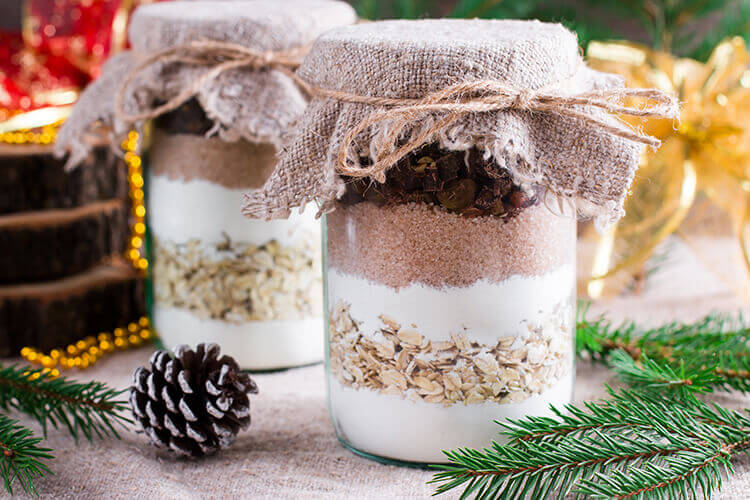
Can your kids use the back of old paperwork to draw on? What about those pickle and jam jars – could you fill them with treats, wrap a ribbon around them use them as table decorations or gifts?
Instead of topping up your stash of Christmas decorations every year, get creative with what you already have.
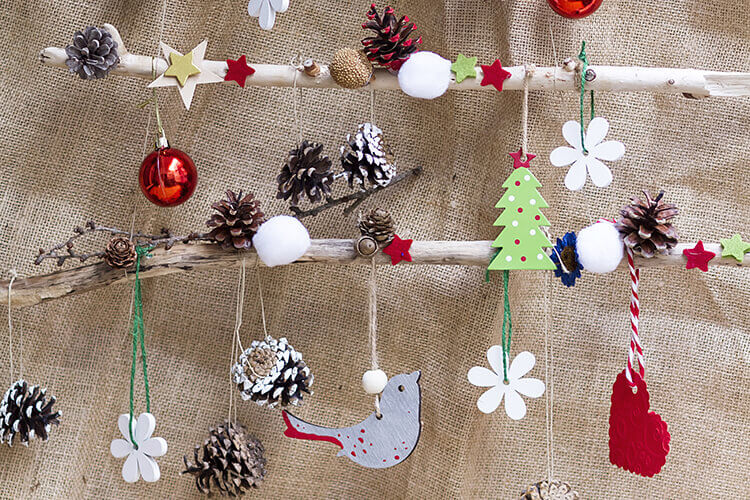
Homemade decorations invite a touch of nostalgia and add charm while cutting down on waste. Try your hand at making your own wreaths using greenery or herbs, a festive table dressed with fresh fruit and flowers, or garlands made from dried citrus and spices. You can also hang Christmas cards over string and use these as bunting-style decorations around your home.
If you do end up buying decorations, choose pieces you will reuse for years to come. Avoid anything that looks like it will break easily and anything with the year printed on it – they’ll date quickly
For trees, a real, living tree in a pot can be enjoyed year after year. Woolly bushes and conifers are popular options, and you can even create a festive look with a cone-shaped succulent arrangement. If you already own an artificial tree, keep using it for as long as possible. Every extra year helps reduce waste and makes your choice more sustainable.
Food waste can skyrocket during the festive season, but a little planning makes a big difference. Start by adopting a ‘use it up’ attitude in early December to make as much space in your fridge, freezer and pantry. As a bonus, taking this approach also helps you to familiarise yourself with the items you’ve already got at home.

Before you shop, make a list and stick to it. Don’t forget your reusable produce bags and shopping bags while you’re at it.
Getting portions right can be tricky. If you’re ‘bringing a plate’ keep reminding yourself that you aren’t responsible for feeding the entire room of people. Also, be prepared to freeze leftovers or plan your other meals around using them up so that you don’t have to throw perfectly good food out.
Chances are, even for those who plan their catering well, there will still be leftovers on Christmas Day. Instead of trying to find a space for it all in your own fridge, ask guests to bring a reusable container along so that they can enjoy their favourite dish again the next day. Who doesn’t love a free meal on Boxing Day?
If you know you’ll be eating out for the next few days, it might also be a good idea to freeze your leftovers so that you can enjoy them at a later date.
Unavoidable food scraps can be thrown into your compost bin, worm farm or FOGO bin if you have one.
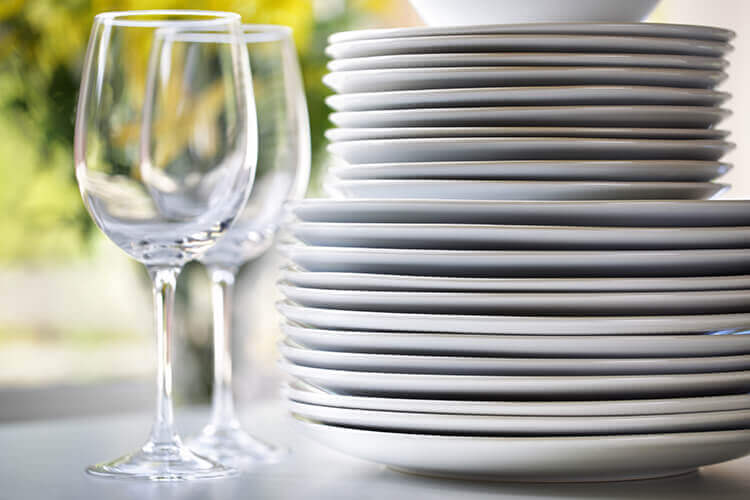
Skip single-use plates, cups and cutlery. It does mean there’s a bit more washing up to do, but it saves money and waste. Plus, it’s a good way to break up the eating and drinking.
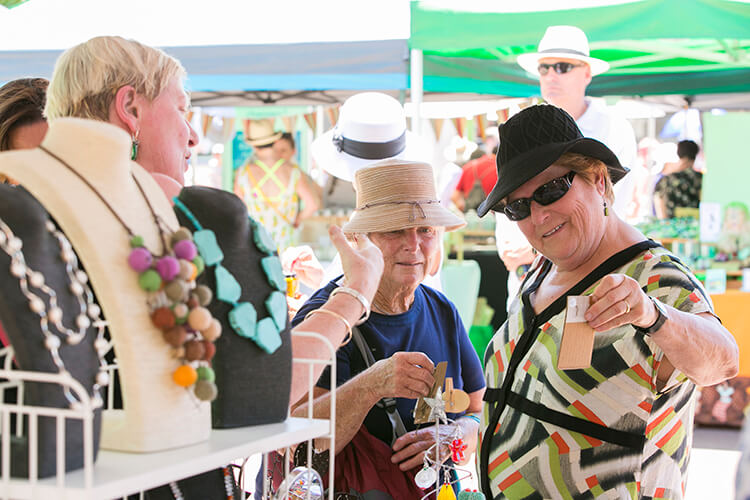
Shopping local is a win for everyone. Skip the shipping, cut the waste and support your community.
Local farmers’ and makers’ markets are great for low-waste shopping because they often offer goods with minimal packaging. Local shopping means fewer transport emissions and less packaging waste from online orders. It also keeps money in your neighbourhood and helps small businesses thrive. Handmade gifts often come with a story, making them more personal and memorable than mass-produced items.
For those with big families, it can be overwhelming to have everyone over all at once, especially when it only happens once or twice a year. Instead of buying chairs, cutlery and crockery in bulk and having nowhere to store them the rest of the time, consider borrowing from friends or hiring what you need. Community sharing groups like Buy Nothing are a great option for local solutions.

There are a lot of companies who hire out equipment for events at a reasonable price. Some even include delivery and post-event pick up for convenience.
Get in touch if you have other ideas on how to reduce your waste over the festive season.

Western Australia’s new container deposit scheme, Containers for Change, launches in June 2020. Here’s what you need to know for now.
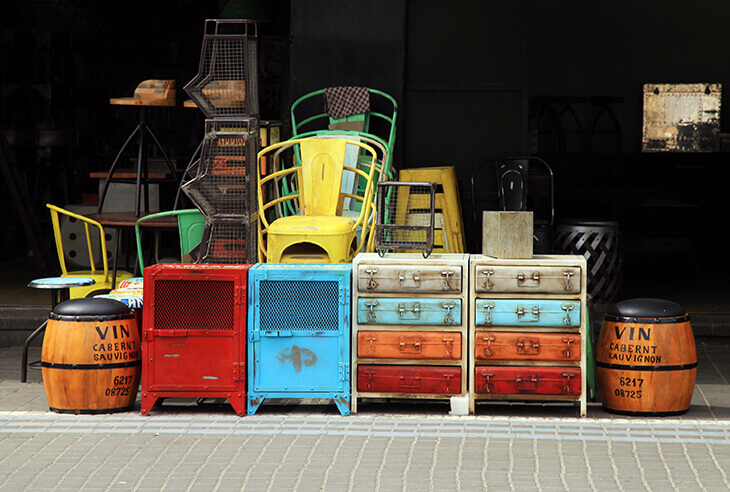
Reusing items that already exist is one of the best ways to reduce waste. This guide will show why second-hand and preloved items are often superior and how you can get more of them in your life.

GREAT Sorts in your neighbourhood put less in their landfill bin by visiting their local repair lab or repair cafe.